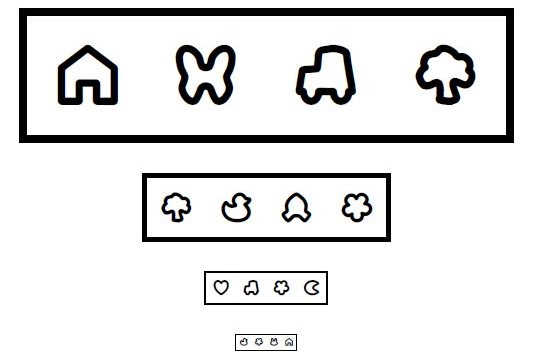Kiwi symbols part of HAT
A simple printed vision chart, using optotypes designed by the University of Auckland, that can be downloaded and printed has proved its worth in a recent study by Moorfields Eye Hospital in London.
With the rise of telemedicine in the wake of Covid-19, an eye chart that can be printed by patients, or their eye care practitioner and sent to them, could be a useful tool for people excluded from digital testing, said study co-author Dr Michael Crossland, a senior optometrist at Moorfields. “We are excited to be developing a simple test that clinicians can use to estimate the level of vision in patients who can’t attend in-person appointments. It has the potential to be a great addition to telephone and online appointments and we are encouraged by our results.”

Dr Michael Crossland
Since the start of the pandemic, the UK has experienced a spike in eye health appointments conducted online or by phone. This prompted a team of researchers from Moorfields, UCL and the universities of Essex and Cambridge, to devise a low-tech way to conduct eye tests remotely while providing consistent, accurate testing without the need for specialist equipment. The resulting Home Acuity Test (HAT) uses the Sloan standard letter test or, for those unable to identify letters, the 10 simplified optotypes developed by Auckland University’s School of Optometry and Vision Science (SOVS).
In the Moorfields-led study, 50 control participants (33 women; mean age 36) and 100 ophthalmology patients (65 women; mean age 55.3) with a wide range of eye diseases were recruited for the trial. Each was sent two HAT charts, Blu-Tack to fix them to a wall and a 150cm length of string to measure chart-viewing distance. Participants were then phoned by a clinician and asked to cover each eye in turn and read the chart from the required distance, using glasses if necessary. When comparing the number of letters read correctly, researchers found similar results from both the HAT test and the person’s previous clinic-based test.
“Measuring vision at home is unlikely to ever be as accurate as in-clinic assessment by a trained clinician, but we have shown HAT can be used to measure vision by telephone for a wide range of ophthalmology outpatients with diverse conditions, including those who are severely visually impaired,” said Department of Psychology lecturer Dr Matteo Lisi from Essex University.
Commenting on the increasing number of home acuity tests available on the market, Professor Steven Dakin, head of SOVS, said, “Using home tests, like HAT and MyAcuity app for example, offers a simple way to monitor change remotely and can augment what optometrists already do.”
The HAT test can be downloaded free of charge from https://homeacuitytest.org/
For more on the Auckland optotypes, see https://eyeonoptics.co.nz/articles/archive/children-s-eye-chart-upgraded/
























